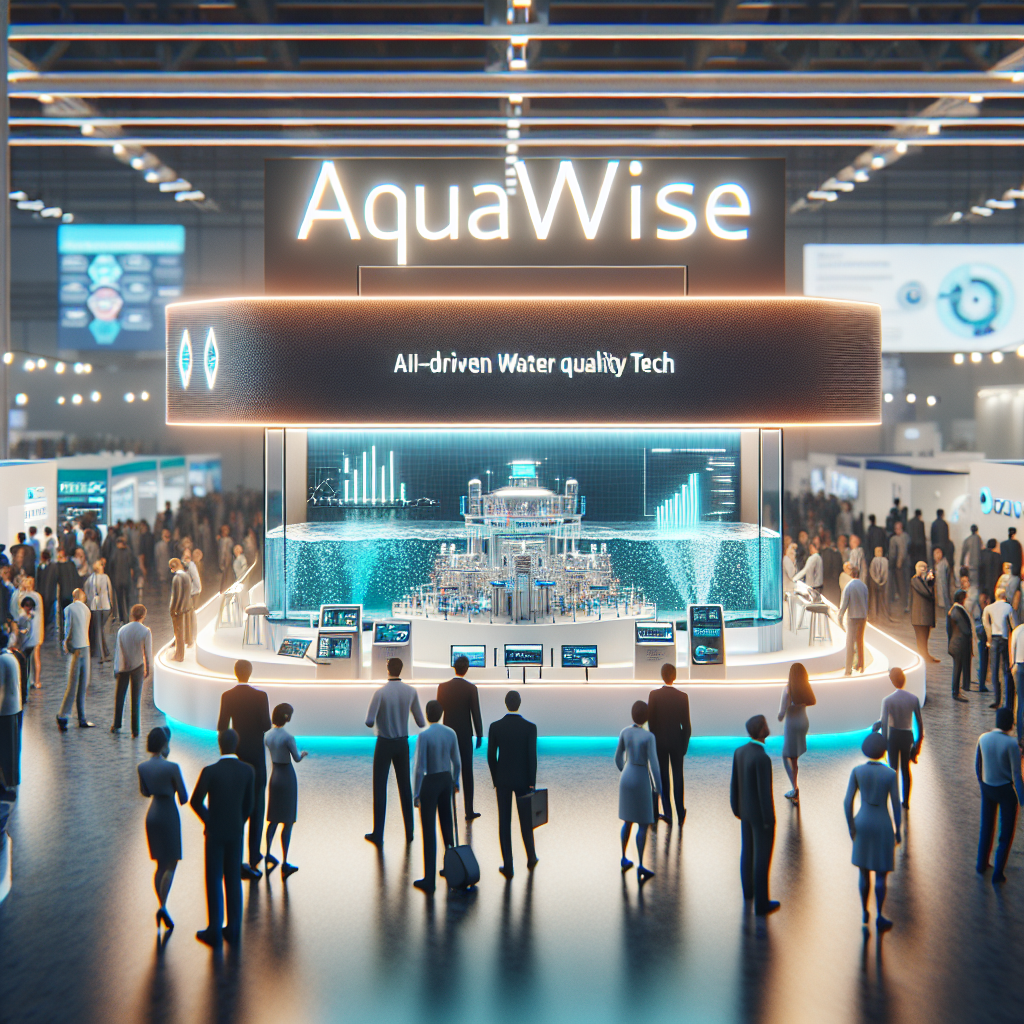-
Maine’s first large-scale AI data center planned for Aroostook County

Maine is on the brink of entering the forefront of artificial intelligence infrastructure with the announcement of its first large-scale AI data center, slated to potentially open within six months at the former Loring Air Force Base in Aroostook County. This groundbreaking project, initiated by the Loring LiquidCool Data Center in collaboration with Green 4 Maine LLC, not only signifies a monumental leap for the region but could also position Maine as a pivotal player in the rapidly evolving data landscape.
As the demand for robust data processing capabilities surges alongside the expansion of generative AI technologies—exemplified by systems like ChatGPT—establishing a sizable data center becomes essential. Traditional data centers often grapple with the escalating power demands that modern AI operations require. Currently, Maine has not experienced a significant increase in electricity pricing associated with this surge, in contrast to many regions across the U.S. that have been feeling the heat.
One of the standout features of the planned Maine data center is its use of a novel cooling technology from LiquidCool Solutions. This innovative approach utilizes a closed-loop liquid cooling system rather than conventional fans to regulate server temperatures, which can greatly improve efficiency and reduce energy consumption. Energy for the center will primarily be sourced from Canadian hydropower, allowing the project to lean into renewable energy, though key details on the potential impact on local electricity bills remain ambiguous.
Herb Zien, vice chair of LiquidCool Solutions, emphasizes that this technology represents a significant shift from traditional methods, extending a potential attractor for international interest. He underscores that the operational dynamics of the new data center could herald a shift in how data centers are built and managed into the future, marking it as a potential trendsetter in the realm of AI infrastructure.
The data center is set to occupy a substantial 115,000 square feet, marking a notable milestone in efforts to revive the former military site. Green 4 Maine’s managing director, Scott Hinkel, while discussing the implications of this development, noted that this initiative is just the beginning. Plans are already in the works for additional data centers at this site, demonstrating a clear intention to capitalize on the growing need for data processing capabilities.
The logistical advantages of the site play a significant role in its desirability for data center operations. The existing fiber optic network that connects directly to Boston ensures that the facility will have access to the fast internet speeds crucial for effective data communication and processing. Hinkel’s assertion that “Maine is poised to do very well in the data world coming up” resonates well with the ongoing economic stimulation that the tech sector is likely to provide the area.
Beyond the establishment of the data center itself, Hinkel shared plans aiming for a broader economic revitalization of northern Maine, highlighting a commitment to visionary energy initiatives and sustainable economic development. As part of the project’s vision, Green 4 Maine is set to raise capital for building between 1,500 to 2,000 housing units on the air base, aimed at supporting the influx of workers that the data center and related initiatives will generate.
As we stand on the edge of a technological shift marked by explosive growth in generative AI demand, Maine’s forthcoming data center could play a crucial role in meeting the infrastructure needs of this new age. By 2024, more than 1,200 data centers are anticipated to either be built or approved for construction, firmly cementing the role of such facilities in the ongoing AI revolution.
-
StackAdapt Launches AI-Driven Martech Suite for Unified Data & Marketing

In a significant leap for marketing technology, StackAdapt has introduced its AI-driven martech suite, which officially launched on October 15, 2025. This launch marks a pivotal moment in StackAdapt’s transformation from a focused programmatic platform to a complete full-funnel integrated marketing solution.
The newly unveiled platform drastically enhances the capabilities of marketers by unifying email marketing, first-party data activation, and programmatic advertising into a singular, AI-powered system. This unification empowers marketers to efficiently automate cross-channel campaigns while fine-tuning performance with increased precision.
StackAdapt’s martech suite stands out in its ability to unify and personalize marketing campaigns across various paid and owned media channels. By utilizing real-time behavioral triggers, advanced segmentation, and dynamic creative optimization, the platform offers robust tools for engaged marketers looking to enhance user experiences. One notable feature is the platform’s unique orchestration flows, which integrate pixel-based programmatic engagement with automated email messaging within a seamless customer journey.
For instance, when a user fills out a form to receive a digital report, the martech suite can automatically trigger a follow-up email and add the user to a programmatic retargeting campaign. This level of automation and responsiveness not only enhances user engagement but also streamlines the marketer’s workflow significantly.
With its general availability release, StackAdapt also announced expanded integrations with several leading CRM and marketing platforms such as HubSpot, Klaviyo, Braze, and CallRail. These integrations allow marketers to seamlessly upload and analyze first-party data, implement one-time or automated email campaigns, and initiate engagement across programmatic channels—all through one cohesive workflow.
Vitaly Pecherskiy, co-founder of StackAdapt, highlighted the significance of this development for modern marketers. He stated, “This is a pivotal moment for marketers who are looking to activate their data and deliver connected customer experiences at scale.” He emphasized that the new platform eliminates operational friction between adtech and martech, enabling real-time decision-making and coordinated messaging across email and programmatic avenues.
StackAdapt’s enhanced orchestration capabilities include innovative features such as the conversion event trigger. This addition transforms every user interaction on a website into a re-engagement opportunity through email or programmatic outreach. Furthermore, the platform supports randomized path testing within the marketing flows, allowing marketers to assess and optimize their campaign sequences based on real performance outcomes—a major boost to campaign efficacy.
The suite also includes significant enhancements to email marketing features, such as support for multiple custom domains, which is particularly beneficial for agencies and enterprise marketers managing communication across various brand portfolios. This flexibility is crucial for maintaining brand consistency while ensuring that the communications are tailored to meet specific audience needs.
Moreover, StackAdapt’s dynamic creative optimization (DCO) capabilities are extending beyond the conventional e-commerce and automotive sectors into new verticals that include B2B, finance, and education. This expansion grants marketers the ability to personalize ad creatives more effectively based on audience data, product feeds, or user behavior—enabling them to craft messages that resonate deeply with individual users.
Clients of StackAdapt are already harnessing the power of the new martech suite to construct meticulously orchestrated customer journeys, leading to quantifiable outcomes. “StackAdapt is redefining what’s possible in cross-channel marketing,” remarked Megan Storm, head of media at Bailey Lauerman. She praised the platform’s ability to unify email and programmatic campaigns, underscoring the importance of tracking performance within a single platform that fosters accountability and insight.
In conclusion, StackAdapt’s recent offering represents a significant advancement in how businesses can leverage data-driven marketing to establish more interconnected, personalized customer experiences. This innovative suite not only exemplifies the possibilities of AI integration in marketing but also sets a new standard for what marketers can achieve in the increasingly competitive landscape of digital advertising.
-
Building trust in AI-powered security operations

The landscape of cybersecurity is undergoing a revolutionary transformation, largely driven by advancements in artificial intelligence (AI). In a recent discussion led by James Hodge, VP of Global Specialist Organisation at Splunk, the pivotal role of AI in enhancing cybersecurity threat detection took center stage. With the explosion of machine data projected to account for 55% of all data growth by 2028, the urgency to leverage AI technologies for bolstering security operations has never been more critical.
Hodge’s insights illuminate how AI can process and analyze vast amounts of data more swiftly than any human counterpart. This capability significantly reshapes how organizations pinpoint and address threats, allowing for quicker response times and improved detection accuracy. As cyber threats become increasingly sophisticated, relying on traditional manual methods for identifying and mitigating these risks proves insufficient. The future demands an integrated approach where AI stands at the forefront, sifting through enormous datasets to highlight anomalies that could indicate potential threats.
One of the key topics Hodge touches on is the necessity of federated analytics and data fabric strategies in managing security at scale. As organizations grapple with the overwhelming flow of data generated from various sources, employing a unified approach to data analysis becomes essential. Federated analytics facilitates collaboration across departments and locations, ensuring that critical security insights are not siloed and that responses are coordinated. This strategy nurtures a culture of proactive security management, emanating from a solid foundation of shared data insights.
However, the integration of AI in security operations does not come without its challenges. Hodge emphasizes several emerging threats that organizations must navigate, such as infrastructure constraints, data gaps, and risks posed by adversarial attacks on AI models. These adversarial attacks are particularly concerning; they exploit the vulnerabilities of AI systems, potentially leading to manipulated outputs that could undermine security measures. Therefore, it becomes imperative for organizations to develop resilient AI systems that can withstand such threats while maintaining integrity and accuracy throughout the threat detection lifecycle.
Frameworks like MITRE ATLAS and NIST’s AI Risk Management Framework (RMF) serve as crucial resources for organizations aiming to establish trustworthy AI systems. Hodge advocates for the adoption of these frameworks to guide the development of AI models that not only detect threats but also operate securely within the broader cybersecurity ecosystem. By grounding AI initiatives in these established frameworks, organizations are better positioned to evaluate and mitigate risks, ensuring that their AI technologies can be relied upon to safeguard critical data and operations.
Building trust in AI-powered security operations is a multifaceted challenge that requires a cohesive strategy involving technical implementation, continuous monitoring, and risk evaluation. As organizations continue to embrace AI technologies, they must prioritize the establishment of robust protocols that ensure their AI systems are trustworthy, transparent, and resilient against evolving cyber threats.
In conclusion, Hodge’s exploration of AI’s role in cybersecurity underscores the significance of integrating advanced technologies to enhance threat detection capabilities. The path forward involves not only embracing the efficiencies offered by AI but also ensuring that these systems operate securely and effectively. As we move closer to a future where AI is an essential component of cybersecurity strategy, building trust in these technologies will be critical to their success and longevity in protecting against the ever-growing landscape of cyber threats.
-
Fintech firm Revolut Scoops Up AI Travel Agent Startup

Revolut, a leading fintech firm, announced its acquisition of Swifty, an innovative AI travel agent startup. Founded in Berlin just two years ago, Swifty emerged from the Lufthansa Innovation Hub, showcasing a commitment to blending cutting-edge technology with travel services. The acquisition, while details about the financial aspects remain undisclosed, represents a significant move for Revolut as it continues to expand its portfolio and enhance its service offerings.
The strategic acquisition of Swifty not only adds a novel technological edge to Revolut but also brings on board co-founders Stanislav Bondarenko and Tomasz Przedmojski. These tech entrepreneurs have been instrumental in building Swifty into a promising AI-driven platform that harnesses algorithms to assist travelers in planning their trips efficiently. With their expertise, Revolut aims to integrate AI-driven services into its existing offerings, further solidifying its position in the evolving fintech landscape.
As travel continues to rebound in a post-pandemic world, the acquisition aligns well with emerging trends, where consumers increasingly lean towards digital solutions for more personalized travel experiences. Swifty’s AI tools promise to revolutionize how plans are made, from booking flights to suggesting itineraries tailored to individual preferences and travel history. This capability not only enhances user convenience but also makes the travel experience more seamless and enjoyable, thus attracting a larger customer base for Revolut.
The move signifies a critical focus on incorporating advanced technology into financial services. In recent years, the intersection of fintech and travel tech has gained notable attention, with many firms exploring how to leverage AI to streamline processes. By acquiring Swifty, Revolut is not merely expanding its technological repertoire; it is also making a statement regarding the increasing significance of AI in enhancing customer engagement and satisfaction.
The implications of this acquisition could be far-reaching. For Revolut, integrating Swifty’s capabilities has the potential to create synergies that elevate their travel-related services, which could lead to increased user retention and customer loyalty. Townhall conversations among industry experts predict that this could set a benchmark within the fintech sector, urging other players to similarly invest in AI-driven startups to sustain competitive advantage.
From a commercial perspective, this acquisition can also pave the way for new revenue streams. With its augmented travel services, Revolut can offer various premium subscription models to users, providing exclusive benefits such as personalized travel itineraries, expense tracking for business trips, or even travel insurance options that cater specifically to frequent travelers. Such offerings could appeal to both individual consumers and corporate clients.
Looking ahead, the integration process will be critical. While Revolut has taken an impressive step in acquiring Swifty, successful amalgamation of the two entities is essential to leverage Swifty’s technology effectively. This will involve aligning operational processes, engineering teams, and branding strategies to create a coherent user experience that embodies the ethos of both brands.
Overall, the acquisition of Swifty represents a notable advancement in Revolut’s ambition to redefine financial services through technology. It’s an exciting development that not only enhances Revolut’s service offerings but also highlights a trend in the industry towards leveraging AI to improve customer experiences. As the fintech sector continues its evolution, investments like these will likely pave the way for smarter, more personalized services that meet the demands of modern consumers.
-
Aquawise will show off its AI-driven water quality tech at TechCrunch Disrupt 2025 | TechCrunch

Aquaculture is a vital sector for food production, especially in Southeast Asia, where monitoring water quality remains a significant challenge. This is where Aquawise steps in, introducing an innovative solution that leverages advanced AI technology and satellite imagery to empower aquaculture farmers.
Founded by the passionate young innovator Patipond Tiyapunjanit, Aquawise aims to make water quality monitoring more accessible and efficient for farmers, especially those operating in regions where traditional methods can be prohibitively expensive. The existing protocols for assessing water quality often involve costly sensor installations and multiple water testing kits, which can be a heavy financial burden for small-scale farmers.
Aquawise has creatively bypassed the need for expensive hardware by utilizing existing satellite technology. The company captures satellite images of fish and shrimp farms and feeds this data into a sophisticated physics-based AI model. This model continuously assesses critical water parameters such as temperature, chlorophyll levels, and oxygen concentration. Unlike conventional methods that rely on sporadic sampling, Aquawise’s system enables real-time monitoring, providing farmers with immediate insights into water quality.
The urgency and significance of this technological advancement cannot be understated. As Tiyapunjanit aptly puts it, “Water quality is one of the most important things in aquaculture. It’s like being a human: You have to breathe.” Maintaining optimal water conditions is crucial for aquatic life, where deviations in water quality can lead to stress and disease outbreaks among livestock. Given that up to 80% of aquaculture farms face water quality issues, Aquawise identifies a critical market gap ripe for disruption.
With its emphasis on sustainability and efficiency, Aquawise is poised to make a substantial impact on the aquaculture industry. By addressing the pressing need for cost-effective monitoring solutions, the company not only helps farmers minimize losses—which reportedly amount to $30 billion annually due to water quality-related issues—but also enhances overall productivity within the sector.
Aquawise is scheduled to showcase its pioneering technology at TechCrunch Disrupt 2025 as part of the Startup Battlefield competition. This prestigious event will take place from October 27 to 29 at the Moscone West in San Francisco. This spotlight offers Aquawise an invaluable platform to highlight its innovative approach and connect with potential investors who resonate with its vision.
The journey of Aquawise from initial concept to a promising startup is as interesting as the technology it champions. Tiyapunjanit’s passion for aquaculture began during a research project focused on shrimp larvae, leading him to explore the critical needs within the industry. This journey took a significant turn during the 2023 Young Scientist Competition, where he met his future co-founders, Chanati Jantrachotechatchawan and Kobchai Duangrattanalert. Their collaboration blossomed as they together aimed to tackle the pressing issue of water quality in aquaculture.
Tiyapunjanit emphasized the importance of stepping back to identify the critical problems affecting the sector. Their research indicated that water quality issues are a central theme, affecting a vast majority of farms across the region. With Aquawise, they not only aim to resolve this challenge but also foster better practices for sustainable aquaculture.
Looking ahead, the future seems promising for Aquawise as they strive for growth and wider adoption of their technology. Their innovative AI-driven approach could redefine the standards of water quality management in aquaculture, making it accessible and efficient for farmers everywhere. By marrying advanced artificial intelligence with satellite technology, Aquawise is not just a company; it’s a significant step towards ensuring the health and sustainability of aquaculture ecosystems across Southeast Asia and beyond.
-
Satellogic Launches Very-High Resolution NextGen Satellite Platform for Sovereign, AI-First Earth Observation Missions

In an era where data-informed decisions are critical, Satellogic has unveiled its groundbreaking NextGen satellite platform designed for sovereign, AI-first Earth observation missions. Announced on October 13, 2025, this major leap in satellite technology could redefine how governments monitor their territories and respond to challenges in real-time.
NextGen showcases advanced features, including a remarkable 30 cm-class resolution and onboard AI processing capabilities. This innovative design directly addresses the pressing global demand for high-quality Earth observation systems. At its core, NextGen is built upon Satellogic’s well-established NewSat architecture, which has supported over 50 successful satellite launches over the past decade.
Marking a significant milestone in its corporate growth, Satellogic is positioned to deliver vital tools for nations seeking to enhance their autonomous space programs. The platform is designed to detect changes on the Earth’s surface almost instantaneously, allowing governments to act quickly on emerging threats or opportunities. The initial satellite delivery is already under contract, with operations expected to commence in 2027, signifying a productive future in the realm of Earth observation.
Emiliano Kargieman, CEO and Founder of Satellogic, articulates the mission behind NextGen: “As space becomes increasingly central to global infrastructure and decision-making, nations must move to autonomous space programs.” With this sentiment, Satellogic emphasizes that near real-time Earth observation is not merely a luxury but a necessity for modern governance.
The non-ITAR design of the satellites will also facilitate greater international collaboration, making the platform export-ready and customizable for national space initiatives. This accessibility ensures that diverse regions can benefit from robust Earth observation capabilities tailored to meet specific needs, facilitating knowledge transfer and fostering local production.
NextGen will complement Satellogic’s vertical integration strategy, supported by its Aleph platform, which simplifies imagery tasking and enhances data delivery. Through Aleph’s cloud-based tools and APIs, users can access high-resolution imagery and AI-generated insights seamlessly. The platform’s low-latency delivery model boosts efficiency, significantly shortening the timeline from data collection to actionable decision-making.
The response to Satellogic’s advancements indicates a growing recognition of the importance of autonomous technologies in Earth observation. By easing access to high-quality data, Satellogic empowers governments and organizations to maintain sovereignty over their observation capabilities efficiently.
Through innovations like NextGen, Satellogic underscores its commitment to partnering with nations and businesses eager to establish their own satellite constellations. This forward-thinking approach not only aligns with the industry trend towards greater automation and real-time intelligence but also actively shapes the future landscape of Earth observation.
Furthermore, the emphasis on AI-driven approaches in satellite technology is timely, as industries and governments work towards enhanced data utilization from orbit to ground. The growing importance of these platforms aligns with a need for clearer and more responsive decision-making processes that are data-driven and evidence-based.
As organizations and nations strive for greater independence in managing their Earth intelligence, Satellogic’s NextGen platform could stand at the forefront of this transition. The ability to generate crucial insights rapidly will open up new avenues for sustainable development, disaster response, and resource management.
This transformative technology reflects an increasing shift towards autonomy in space programs, advocating for efficient control over national resources and priorities in a manner that was previously unattainable. The commercial implications of such advancements are vast, affecting not just governmental agencies, but also private enterprises looking to leverage accurate satellite data for various applications.
As we move further into a future dominated by technological innovation in satellite systems, the NextGen initiative by Satellogic highlights a pivotal moment not only for the company but for industries globally leveraging AI and Earth observation capabilities.
-
BNB News: Sparkvia AI Launches $SPARK Presale on BNB Chain—Bringing The First AI-Powered Writing Platform to BNB Ecosystem

Introduction to Sparkvia AI
On October 12, 2025, Sparkvia AI announced a significant leap in the intersection of artificial intelligence and blockchain technology with the launch of the SPARK ($SPK) presale on the BNB Chain. As the first AI-powered writing platform to introduce a credit-based model in the BNB ecosystem, Sparkvia aims to revolutionize how creators generate content for various platforms including blogs, websites, product pages, and social media.
The presale provides access to a utility token that fuels a pay-as-you-go credit system specifically designed for AI-driven writing tasks. This model eliminates the need for cumbersome subscriptions and tier lock-ins, allowing users the freedom to pay based on usage instead of flat-rate services.
Understanding the $SPK Token
At the core of the Sparkvia AI platform lies the $SPK Token. Users can purchase Spark credits with this token, which are then utilized to generate content through the platform’s sophisticated writing tools. What sets this system apart is the predictable and uniform cost per prompt, enabling users to manage their budgets effectively.
Zayven Annati, the founder of Sparkvia AI, emphasized the platform’s innovative approach: “SPARK connects what creators pay with what they produce.” This statement highlights the importance of value exchange in content creation, bringing greater transparency and control to users.
Immediate Utility for BNB Users
From the moment users engage with Sparkvia, they are rewarded with 100 free Spark credits. This allows access to over 100 different writing tools including a Creative Home Page Writer, Advanced Blog Post Writer, Grammar & Style Editor, and an All-in-One Social Post generator. This immediate utility enhances the experience for BNB users, who are encouraged to leverage these tools for their writing needs.
Moreover, the simplicity of the credit consumption model means that users can clearly foresee their expenditures before initiating a generation command. Top-ups are notably quick and the transactions are settled on-chain, ensuring that agencies and collaborative teams have an up-to-date and auditable financial trail.
Highlighting Speed and Efficiency
Time is a precious commodity in the digital age, and Sparkvia AI recognizes that. With the new platform, users can generate, refine, and export written content in a matter of minutes. This rapid output allows creators to maintain their workflow uninterrupted, with the flexibility of topping up their credits within a session. The seamless integration of blockchain technology not only enhances the user experience but also introduces a new level of efficiency that traditional content generation methods often lack.
Sparkvia AI has already seen impressive results since its inception, having onboarded over 500 users. This notable adoption rate signifies a growing demand for AI-driven tools that align with contemporary workflows and offer crypto-native settlement options.
Participation in the $SPK Presale
For those interested in joining the Sparkvia movement, participating in the $SPK presale is straightforward. Interested parties can visit the dedicated sale portal to contribute with BNB to the sale address provided. After the on-chain confirmation is completed, participants will receive their $SPK tokens within 24 hours of the sale’s conclusion. This process emphasizes the importance of instant access and transparency, hallmarks of what Sparkvia AI stands for.
About Sparkvia AI
Founded by Zayven Annati and headquartered in Malta, Sparkvia AI provides an advanced AI-driven writing platform designed to meet the needs of marketers, founders, agencies, and content creators seeking speed and clarity in their content workflows. The innovative approach to on-chain credits and the focus on user autonomy sets Sparkvia apart in the rapidly evolving landscape of AI solutions.
The SPARK ($SPK) presale is currently active and can be accessed at https://sale.sparkvia.ai/. For detailed information and steps to participate, interested individuals are encouraged to visit the portal and explore the transformative potential of Sparkvia AI.
-
Can’t afford Nvidia’s expensive AI accelerators? Then consider this 10.8Kw server cluster with 32 Intel GPUs and 768GB VRAM

For many businesses and research institutions, the high cost of advanced AI accelerators is a significant barrier to entry. Recognizing this challenge, Taiwanese graphics card manufacturer Sparkle has unveiled a powerful alternative aimed at delivering competitive performance without the hefty price tag associated with Nvidia’s offerings.
The newly introduced C741-6U-Dual 16P is a dense GPU server designed to support an impressive array of configurations, housing up to 32 Intel GPUs and providing a staggering 768GB of VRAM. This system positions itself as an affordable solution for intensive AI workloads, enabling a range of applications from machine learning models to data-intensive research.
At the heart of this server is the potential to utilize 16 Arc Pro B60 Dual graphics cards, each equipped with two Battlemage BMG-G21 GPUs. When fully outfitted, this setup yields a remarkable total of 81,920 GPU cores. Such capabilities enable users to tackle demanding parallel computing tasks that were once thought to be reserved for systems with exorbitant price tags.
To sustain this level of performance, Sparkle has engineered an advanced cooling system alongside a robust power supply design. The total power output can reach 10,800W through the use of five 2,700W titanium power supplies, ensuring reliability during heavy computational tasks. For lighter configurations, a smaller setup can operate efficiently at 7,200W, utilizing four 2,400W units.
The architectural design of the C741-6U-Dual 16P embraces the latest technology standards. By utilizing PCIe 5.0 x8 interfaces, each GPU connects directly to the CPU, promoting high data bandwidth and minimizing potential bottlenecks. Additionally, the server supports up to 32 DDR5 memory slots, enabling expansive memory configurations to be implemented alongside the Intel Xeon Scalable processors.
With an emphasis on heat management, the server is equipped with an impressive array of up to 15 cooling fans. Such features are critical for maintaining optimal performance during continuous heavy workloads, a necessity for organizations relying on stable and efficient computing resources.
While specific performance metrics in large-scale inference or training tasks are yet to be disclosed, the flexibility offered by the hardware attracts researchers and developers looking for a cost-effective parallel computing solution. This capability is particularly crucial in fields such as artificial intelligence and data science, where scalability and efficiency can make or break a project.
As Sparkle has yet to announce pricing details for the C741-6U-Dual 16P, interested parties are encouraged to inquire directly through the company’s website. This strategic move to enter a competitive market with a robust solution is indicative of the ongoing evolution within the GPU segment, as businesses seek alternatives that not only reduce costs but also maintain high-performance standards.
In summary, Sparkle’s new GPU server provides an attractive and practical entry point for those looking to harness the power of AI without the financial burden of higher-priced hardware. With its impressive specifications and thoughtful design features, the C741-6U-Dual 16P is set to shake up the market and may well become a preferred choice for budget-conscious leaders in tech.
-
Japan group to launch AI service for saury size predictions

The Japan Fisheries Information Service Center is set to revolutionize the fishing industry with its new AI-driven service designed specifically for predicting the size of saury caught in Japanese waters. This innovative initiative will launch in the upcoming fishing season and will rely on the advanced analytical capabilities of artificial intelligence to enhance fishing efficiency.
For years, this Tokyo-based group of fisheries organizations has played a crucial role in disseminating vital information on fishing conditions and oceanographic data to local fishers. Since the inception of its AI prediction model in 2020, the organization has successfully identified potential saury fishing locations by analyzing seawater temperatures alongside historical fishing records. The improvements have been significant year-on-year, now culminating in a robust system capable of estimating not just the locations of saury but also their sizes.
The new service will categorize fishing spots based on size classification, which is primarily determined by fish weight. This strategic approach divides the fishing grounds into two key groups: one that is expected to contain over 70% of saury weighing less than 100 grams, and another known for a higher concentration of midsize to large saury, which weigh 100 grams or more. Such detailed classification is crucial as it allows fishers to optimize their catches by targeting areas with the most suitable fish size for their intended use, whether for commercial sale or processing.
Visual aids are central to the effectiveness of this service, with the implementation of a specialized sea chart marking small saury with dots and midsize and large fish with larger symbols. This intuitive system aims to enhance the user experience for fishers, making it easier to interpret the data at a glance.
Recent statistics from the group highlight a promising improvement in saury catches during the traditional fishing season, with an impressive haul of approximately 28,500 tons reported between August and September. This is a 2.4-fold increase compared to the same period in the previous year, largely attributed to the fish being larger than average, with some specimens exceeding 200 grams in weight due to an abundance of food in the environment.
Of particular note is the expected increase in accuracy for identifying larger saury, which have become scarce in recent years, leading to a significant data gap. As larger saury continue to populate fishing grounds, the AI system will enhance its ability to distinguish between midsize and large fish, particularly those weighing over 120 grams, thus providing valuable insights to fishers aiming for higher quality catches.
The AI-based fishing spot forecast will be seamlessly integrated into the existing “Ebisu-kun” system, which already provides essential data on seawater temperatures among other parameters. Fishers will be able to access forecasts for current and upcoming fishing grounds within two days, streamlining their planning and operations.
This technological integration is widely acknowledged by industry experts, including Kohei Oishi, an executive from the national saury fishery cooperative Zen-Sanma, who expressed appreciation for the anticipated further improvements in accuracy, particularly regarding size classification.
As the fishing industry bounces back from previous years marked by low catches, the improved size classification not only stands to boost fishers’ profits but also augments the supply of high-quality saury to consumers. Smaller saury, commonly used for canned goods and livestock feed, generally fetch lower prices. In contrast, midsize and larger saury, which are preferred for direct sale, tend to command a premium in the market.
The influx of innovation through AI technology represents a new chapter for the fishing industry in Japan. By fostering selective fishing practices, the initiative ultimately seeks to benefit both fishers and consumers, aligning economic growth with sustainable fishing practices and ensuring that the resources of the sea are managed responsibly.
-
ChatGPT AI Tools That 10x Your Codebase : Small Teams, Big Impact

Imagine a reality where writing, debugging, and deploying software occurs with an astonishing speed that feels almost superhuman. This isn’t a distant dream; it’s unfolding today through a new wave of AI-powered tools that are reshaping the software development landscape. From intelligent systems that take over tedious coding tasks to autonomous agents that can write pull requests and conduct real-time code reviews, these innovations promise to enhance productivity to levels previously thought unattainable.
Small teams are now equipped to compete with tech giants, and large organizations can scale operations faster than ever. AI tools are not just an enhancement but a transformation in how developers interact with code, with the primary question shifting from whether to adopt these tools to how soon they will enter the workplace.
OpenAI’s ChatGPT AI is at the forefront of this change, attracting attention for its potential to unlock efficiencies that can skyrocket productivity by a staggering 10x for teams of all sizes. Among the notable developments is Warp, an AI-driven multitasking integrated development environment (IDE) that allows developers to manage various tasks seamlessly while maintaining high-quality standards. This is coupled with Code Rabbit, a groundbreaking automated reviewer that ensures software quality and security by flagging vulnerabilities early in the process.
The introduction of these tools represents a significant shift in the software development process. No longer strictly for seasoned developers, even non-technical contributors can leverage this technology to create robust software solutions. For instance, the autonomous agent known as Charlie Labs exemplifies the power of AI by tackling responsibilities typically reserved for human developers. From identifying bugs to effectively generating pull requests and facilitating collaboration within teams, these agents free developers to channel their efforts into creative and innovative solutions.
AI Transforming Software Development
The key takeaways from this movement towards AI-driven software development are clear: automation is set to redefine coding, debugging, reviewing, and deployment. Smaller teams are positioned to achieve a level of precision and efficiency that rivals their larger counterparts. The entirely new realm of AI-powered development environments, such as Warp—enhanced by GPT technology—provides developers with multitasking capabilities, knowledge retention mechanisms, and real-time code review features, significantly lessening the cognitive load typically associated with software development.
Moreover, Code Rabbit is changing how teams address bottlenecks in the coding process. By automating code reviews and incorporating features like actionable inline comments and adaptive learning tailored to specific teams, the tool not only lends efficiency but also improves overall code quality. As such, it empowers developers to work more effectively while ensuring that their software meets high standards.
Empowering Non-Developers and Bridging Gaps
Saliently, the evolution of AI tools fosters greater collaboration between technical and non-technical team members. The tool Please Fix, for instance, enables non-developers to make real-time modifications to websites, thus eliminating the bottleneck that often arises due to a dependency on technical staff. By bridging this gap, it empowers a broader range of team members to contribute meaningfully to projects, fostering an inclusive atmosphere that promotes innovation.
The potential implications of these advancements in AI are vast. As artificial intelligence continues to streamline software development processes, it reshapes not only workflows but also the broader perspectives on software creation and collaboration within teams. The result is a level playing field where creativity and productivity can flourish irrespective of team size or technical know-how.
In a world increasingly shaped by AI, the question then becomes not if, but how quickly organizations will adapt to these transformative tools. Developers, team leaders, and innovators must consider the integration of these technologies not as a choice but as a necessary evolution in their approach to software development. Embracing these advanced AI tools will be critical for anyone looking to remain competitive in an ever-evolving landscape of technology.
